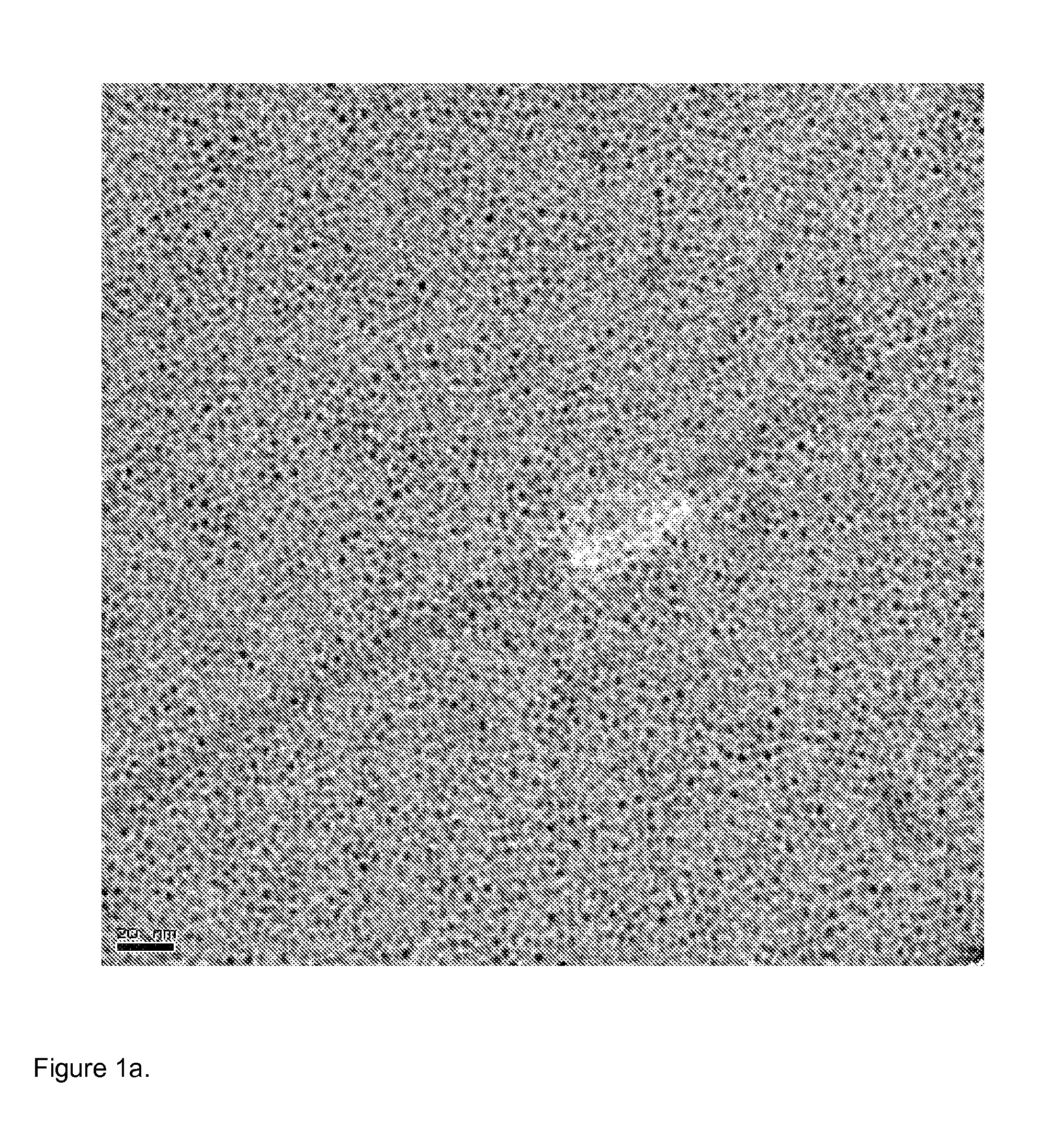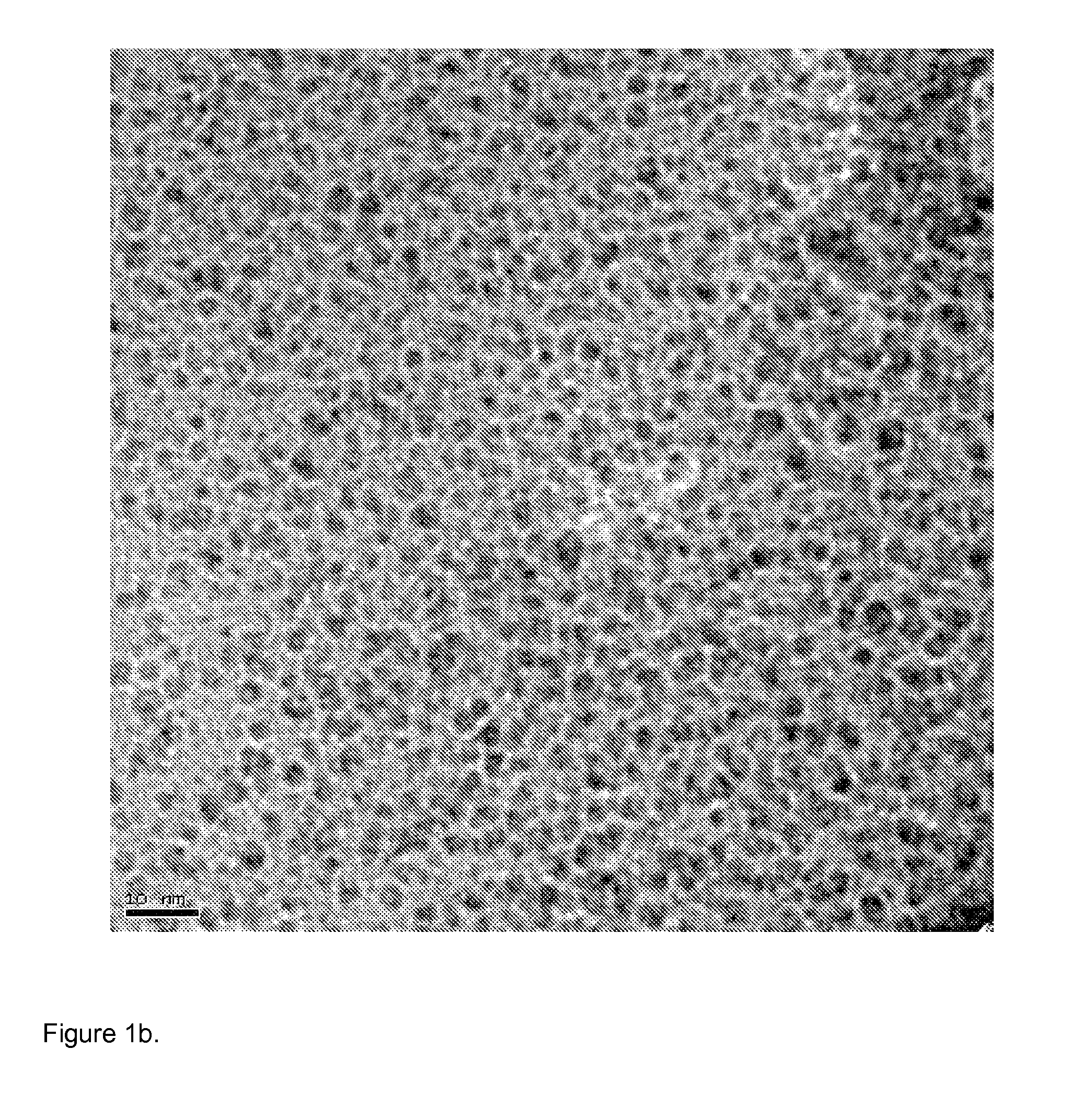Biomimetic Hydroxyapatite Synthesis
a technology of hydroxyapatite and biomimetic hydroxyapatite, which is applied in the field of biomimetic hydroxyapatite synthesis, can solve the problems of low yield or long reaction time, and is not practical for manufacturing implants
- Summary
- Abstract
- Description
- Claims
- Application Information
AI Technical Summary
Benefits of technology
Problems solved by technology
Method used
Image
Examples
example 1
Room Temperature Crystallization of Hydroxyapatite in Water
[0048] Calcium acetate hydrate (99% Acros Organics, Belgium, CAS # 114460-21-8) and potassium orthophosphate hydrate (Acros Organics, Belgium, CAS# 27176-10-9) were used as reactants for the synthesis of hydroxyapatite. First, a 1.0 molal calcium acetate hydrate solution was made using distilled, deionized water. Then, a 0.6 molal solution of potassium orthophosphate hydrate was made using distilled, deionized water. Equal volumes of each were then measured out for the reaction to create a calcium to phosphate ratio of 1.67 (final concentrations of ions if they were to remain in solution would be 0.5 m / 0.3 m). A 100 mL reaction required 50 mL of the calcium solution to be measured and poured into a beaker and 50 mL of the phosphate solution to be added. Agitation via vortexing was then performed until and through the gelation stage. Once the gel returned to solution, the slurry was then allowed to age for 2 minutes. The con...
example 2
Room Temperature Crystallization of Hydroxyapatite in Water
[0051] Hydroxyapatite was prepared according to the method of Example 1. However, a 2.0 molal calcium acetate hydrate solution and a 1.2 molal solution of potassium orthophosphate hydrate were used. The final concentrations of ions if they were to remain in solution after mixing would be 1.0 m / 0.6 m.
[0052] TEM images of the resulting hydroxyapatite particles are shown in FIGS. 1a-d. These images show lattice fringes indicating crystallinity of the particles and also show relatively uniform particle size and morphology.
[0053] The XRD diffraction pattern is shown in FIG. 3b, which also confirms the presence of HAp particles.
example 3
Room Temperature Crystallization of Hydroxyapatite in a Self Buffering Solution
[0054] Calcium acetate hydrate and potassium orthophosphate hydrate solutions were prepared as described in Example 1. The potassium orthophosphate hydrate solution was divided in half and acetic acid was added to one of the two portions until the pH of the solution was 7.4 (volume depends on total solution volume, for example 500 mL solution needs about 23 mL of glacial acetic acid). Proportional amounts of each of the three solutions were then measured out to create a calcium to phosphate ratio of 1.67 and pH of 7.4 (final concentrations of ions if they were to remain in solution would be 0.5 m / 0.3 m). A 20 mL reaction required 10 mL of the calcium solution to be measured and poured into a beaker and 8.5 mL of the phosphate solution (unadjusted) to be added to the calcium solution followed by 1.5 mL of the pH adjusted solution. Agitation via stirring with a glass rod was then performed until the soluti...
PUM
 Login to View More
Login to View More Abstract
Description
Claims
Application Information
 Login to View More
Login to View More - R&D
- Intellectual Property
- Life Sciences
- Materials
- Tech Scout
- Unparalleled Data Quality
- Higher Quality Content
- 60% Fewer Hallucinations
Browse by: Latest US Patents, China's latest patents, Technical Efficacy Thesaurus, Application Domain, Technology Topic, Popular Technical Reports.
© 2025 PatSnap. All rights reserved.Legal|Privacy policy|Modern Slavery Act Transparency Statement|Sitemap|About US| Contact US: help@patsnap.com



